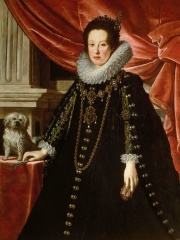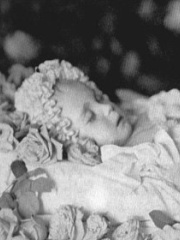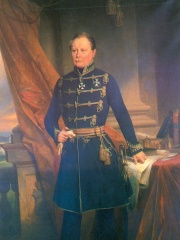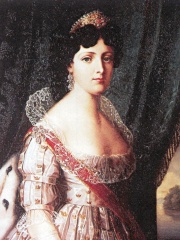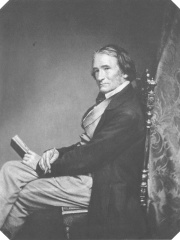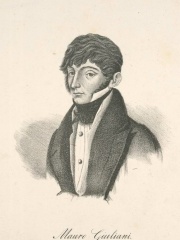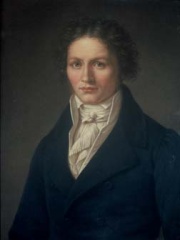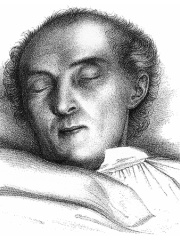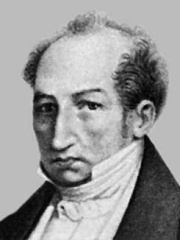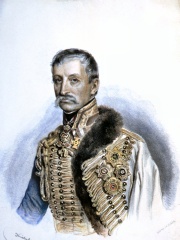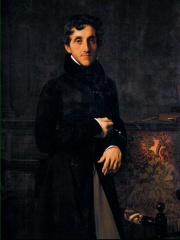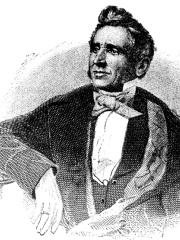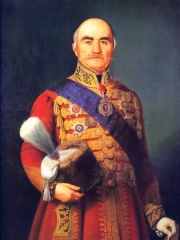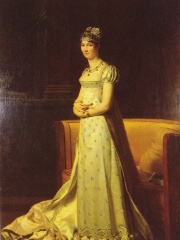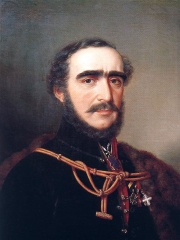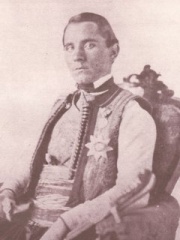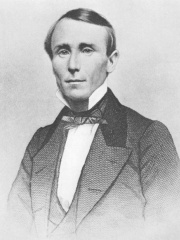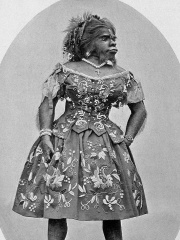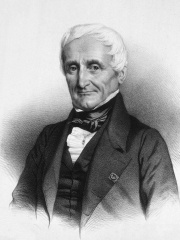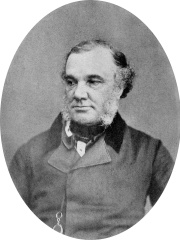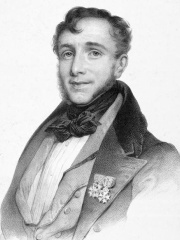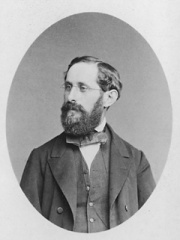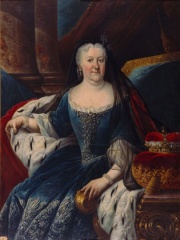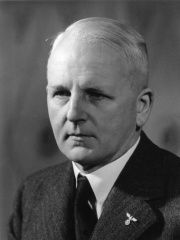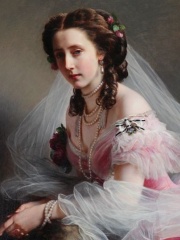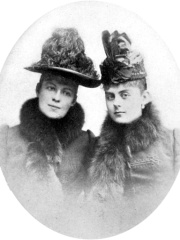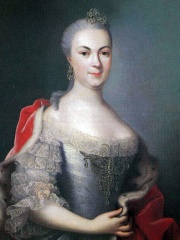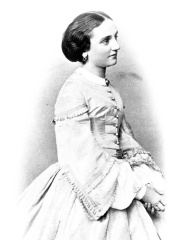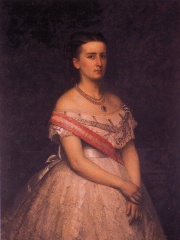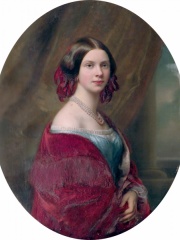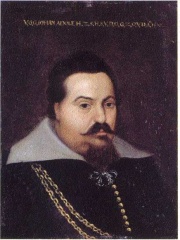NOBLEMAN
Princess Juliane of Saxe-Coburg-Saalfeld
1781 - 1860

 Princess Juliane of Saxe-Coburg-Saalfeld
Princess Juliane of Saxe-Coburg-Saalfeld
Princess Juliane of Saxe-Coburg-Saalfeld (23 September 1781 – 12 August 1860), also known as Grand Duchess Anna Feodorovna of Russia (Russian: Анна Фёдоровна), was a German princess of the ducal house of Saxe-Coburg-Saalfeld (after 1826, the house of Saxe-Coburg-Gotha) who became the wife of Grand Duke Konstantin Pavlovich of Russia. Read more on Wikipedia
Her biography is available in 24 different languages on Wikipedia (up from 23 in 2024). Princess Juliane of Saxe-Coburg-Saalfeld is the 374th most popular nobleman (down from 254th in 2024), the 1,507th most popular biography from Germany (down from 1,194th in 2019) and the 67th most popular German Nobleman.
Princess Juliane of Saxe-Coburg-Saalfeld is most famous for being the mother of Queen Victoria.
Memorability Metrics
Page views of Princess Juliane of Saxe-Coburg-Saalfeld by language
Among NOBLEMEN
Among noblemen, Princess Juliane of Saxe-Coburg-Saalfeld ranks 374 out of 1,415. Before her are Princess Hélène of Orléans, Ingeborg of Norway, William III, Landgrave of Thuringia, Yodo-dono, Alastair Windsor, 2nd Duke of Connaught and Strathearn, and Grand Duchess Kira Kirillovna of Russia. After her are Anna de' Medici, Archduchess of Austria, Neferirkare Kakai, Grand Duke Alexander Alexandrovich of Russia, Prince Ernst August of Hanover, John of Eltham, Earl of Cornwall, and William III, Duke of Aquitaine.
Most Popular Noblemen in Wikipedia
Go to all RankingsPrincess Hélène of Orléans
1871 - 1951
HPI: 65.77
Rank: 368
Ingeborg of Norway
1301 - 1361
HPI: 65.76
Rank: 369
William III, Landgrave of Thuringia
1425 - 1482
HPI: 65.74
Rank: 370
Yodo-dono
1569 - 1615
HPI: 65.74
Rank: 371
Alastair Windsor, 2nd Duke of Connaught and Strathearn
1914 - 1943
HPI: 65.70
Rank: 372
Grand Duchess Kira Kirillovna of Russia
1909 - 1967
HPI: 65.68
Rank: 373
Princess Juliane of Saxe-Coburg-Saalfeld
1781 - 1860
HPI: 65.68
Rank: 374
Anna de' Medici, Archduchess of Austria
1616 - 1676
HPI: 65.66
Rank: 375
Neferirkare Kakai
2483 BC - 2480 BC
HPI: 65.66
Rank: 376
Grand Duke Alexander Alexandrovich of Russia
1869 - 1870
HPI: 65.61
Rank: 377
Prince Ernst August of Hanover
1954 - Present
HPI: 65.58
Rank: 378
John of Eltham, Earl of Cornwall
1316 - 1336
HPI: 65.57
Rank: 379
William III, Duke of Aquitaine
910 - 963
HPI: 65.57
Rank: 380
Contemporaries
Among people born in 1781, Princess Juliane of Saxe-Coburg-Saalfeld ranks 17. Before her are William I of Württemberg, Achim von Arnim, Anton Diabelli, Frederica of Baden, Joseph Karl Stieler, and Mauro Giuliani. After her are William Wyatt Bibb, Johann Baptist von Spix, Karl Christian Friedrich Krause, Giovanni Antonio Amedeo Plana, Archduke Ferdinand Karl Joseph of Austria-Este, and Louis-Mathieu Molé. Among people deceased in 1860, Princess Juliane of Saxe-Coburg-Saalfeld ranks 13. Before her are Charles Goodyear, Miloš Obrenović, Stéphanie de Beauharnais, István Széchenyi, Danilo I, Prince of Montenegro, and Lady Byron. After her are William Walker, George Hamilton-Gordon, 4th Earl of Aberdeen, Julia Pastrana, Ang Duong, André Marie Constant Duméril, and Thomas Addison.
Others Born in 1781
Go to all RankingsWilliam I of Württemberg
POLITICIAN
1781 - 1864
HPI: 70.03
Rank: 11
Achim von Arnim
WRITER
1781 - 1831
HPI: 69.71
Rank: 12
Anton Diabelli
MUSICIAN
1781 - 1858
HPI: 69.24
Rank: 13
Frederica of Baden
COMPANION
1781 - 1826
HPI: 68.75
Rank: 14
Joseph Karl Stieler
PAINTER
1781 - 1858
HPI: 68.00
Rank: 15
Mauro Giuliani
MUSICIAN
1781 - 1829
HPI: 67.50
Rank: 16
Princess Juliane of Saxe-Coburg-Saalfeld
NOBLEMAN
1781 - 1860
HPI: 65.68
Rank: 17
William Wyatt Bibb
POLITICIAN
1781 - 1820
HPI: 65.22
Rank: 18
Johann Baptist von Spix
BIOLOGIST
1781 - 1826
HPI: 64.97
Rank: 19
Karl Christian Friedrich Krause
PHILOSOPHER
1781 - 1832
HPI: 64.91
Rank: 20
Giovanni Antonio Amedeo Plana
MATHEMATICIAN
1781 - 1864
HPI: 63.55
Rank: 21
Archduke Ferdinand Karl Joseph of Austria-Este
MILITARY PERSONNEL
1781 - 1850
HPI: 63.35
Rank: 22
Louis-Mathieu Molé
POLITICIAN
1781 - 1855
HPI: 63.11
Rank: 23
Others Deceased in 1860
Go to all RankingsCharles Goodyear
INVENTOR
1800 - 1860
HPI: 71.72
Rank: 7
Miloš Obrenović
POLITICIAN
1780 - 1860
HPI: 70.64
Rank: 8
Stéphanie de Beauharnais
NOBLEMAN
1789 - 1860
HPI: 68.71
Rank: 9
István Széchenyi
POLITICIAN
1791 - 1860
HPI: 67.01
Rank: 10
Danilo I, Prince of Montenegro
POLITICIAN
1826 - 1860
HPI: 66.17
Rank: 11
Lady Byron
MATHEMATICIAN
1792 - 1860
HPI: 65.80
Rank: 12
Princess Juliane of Saxe-Coburg-Saalfeld
NOBLEMAN
1781 - 1860
HPI: 65.68
Rank: 13
William Walker
POLITICIAN
1824 - 1860
HPI: 65.20
Rank: 14
George Hamilton-Gordon, 4th Earl of Aberdeen
POLITICIAN
1784 - 1860
HPI: 65.00
Rank: 15
Julia Pastrana
RELIGIOUS FIGURE
1834 - 1860
HPI: 64.64
Rank: 16
Ang Duong
POLITICIAN
1796 - 1860
HPI: 64.23
Rank: 17
André Marie Constant Duméril
BIOLOGIST
1774 - 1860
HPI: 64.17
Rank: 18
Thomas Addison
PHYSICIAN
1793 - 1860
HPI: 64.03
Rank: 19
In Germany
Among people born in Germany, Princess Juliane of Saxe-Coburg-Saalfeld ranks 1,507 out of 7,253. Before her are Walter Dornberger (1895), Thomas Tuchel (1973), Friedrich Kalkbrenner (1784), Christian Gottlob Neefe (1748), Eduard Heine (1821), and Ingrid van Houten-Groeneveld (1921). After her are Princess Christine Louise of Oettingen-Oettingen (1671), Ernst von Weizsäcker (1882), Princess Anna of Prussia (1836), John George II, Elector of Saxony (1613), Walter Rauff (1906), and Karl-Otto Apel (1922).
Others born in Germany
Go to all RankingsWalter Dornberger
ENGINEER
1895 - 1980
HPI: 65.70
Rank: 1,501
Thomas Tuchel
SOCCER PLAYER
1973 - Present
HPI: 65.69
Rank: 1,502
Friedrich Kalkbrenner
MUSICIAN
1784 - 1849
HPI: 65.69
Rank: 1,503
Christian Gottlob Neefe
COMPOSER
1748 - 1798
HPI: 65.69
Rank: 1,504
Eduard Heine
MATHEMATICIAN
1821 - 1881
HPI: 65.69
Rank: 1,505
Ingrid van Houten-Groeneveld
ASTRONOMER
1921 - 2015
HPI: 65.68
Rank: 1,506
Princess Juliane of Saxe-Coburg-Saalfeld
NOBLEMAN
1781 - 1860
HPI: 65.68
Rank: 1,507
Princess Christine Louise of Oettingen-Oettingen
POLITICIAN
1671 - 1747
HPI: 65.67
Rank: 1,508
Ernst von Weizsäcker
POLITICIAN
1882 - 1951
HPI: 65.67
Rank: 1,509
Princess Anna of Prussia
POLITICIAN
1836 - 1918
HPI: 65.67
Rank: 1,510
John George II, Elector of Saxony
POLITICIAN
1613 - 1680
HPI: 65.66
Rank: 1,511
Walter Rauff
MILITARY PERSONNEL
1906 - 1984
HPI: 65.66
Rank: 1,512
Karl-Otto Apel
PHILOSOPHER
1922 - 2017
HPI: 65.66
Rank: 1,513
Among NOBLEMEN In Germany
Among noblemen born in Germany, Princess Juliane of Saxe-Coburg-Saalfeld ranks 67. Before her are Countess Marie Larisch von Moennich (1858), Countess Maria Louise Albertine of Leiningen-Dagsburg-Falkenburg (1729), Princess Albertina Frederica of Baden-Durlach (1682), Princess Sophie of Saxony (1845), Princess Marie of Hohenzollern-Sigmaringen (1845), and William III, Landgrave of Thuringia (1425). After her are Prince Ernst August of Hanover (1954), Princess Charlotte of Prussia (1831), Johann Philipp, Duke of Saxe-Altenburg (1597), Magdalena Sibylla of Holstein-Gottorp (1631), Albert, 8th Prince of Thurn and Taxis (1867), and John Adolf, Duke of Holstein-Gottorp (1575).
Countess Marie Larisch von Moennich
1858 - 1940
HPI: 65.90
Rank: 61
Countess Maria Louise Albertine of Leiningen-Dagsburg-Falkenburg
1729 - 1818
HPI: 65.86
Rank: 62
Princess Albertina Frederica of Baden-Durlach
1682 - 1755
HPI: 65.86
Rank: 63
Princess Sophie of Saxony
1845 - 1867
HPI: 65.84
Rank: 64
Princess Marie of Hohenzollern-Sigmaringen
1845 - 1912
HPI: 65.81
Rank: 65
William III, Landgrave of Thuringia
1425 - 1482
HPI: 65.74
Rank: 66
Princess Juliane of Saxe-Coburg-Saalfeld
1781 - 1860
HPI: 65.68
Rank: 67
Prince Ernst August of Hanover
1954 - Present
HPI: 65.58
Rank: 68
Princess Charlotte of Prussia
1831 - 1855
HPI: 65.52
Rank: 69
Johann Philipp, Duke of Saxe-Altenburg
1597 - 1639
HPI: 65.46
Rank: 70
Magdalena Sibylla of Holstein-Gottorp
1631 - 1719
HPI: 65.43
Rank: 71
Albert, 8th Prince of Thurn and Taxis
1867 - 1952
HPI: 65.42
Rank: 72
John Adolf, Duke of Holstein-Gottorp
1575 - 1616
HPI: 65.39
Rank: 73






